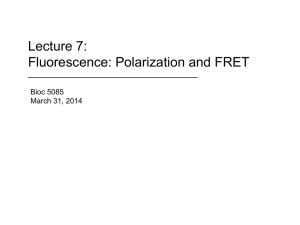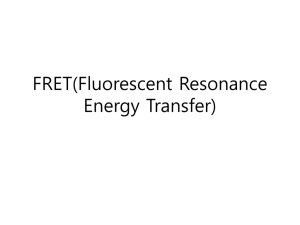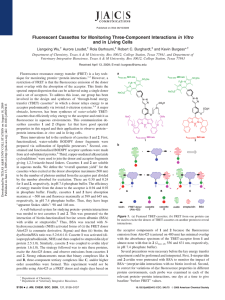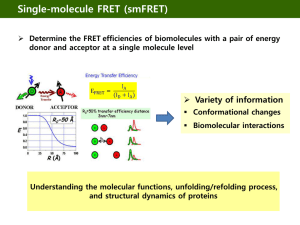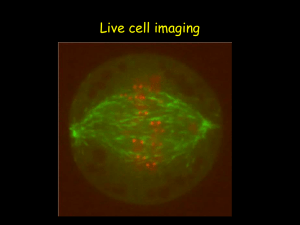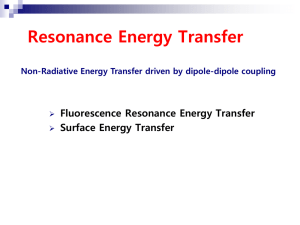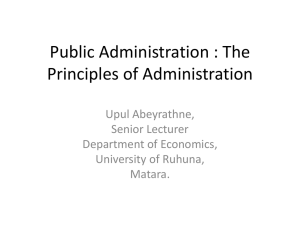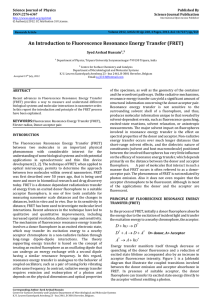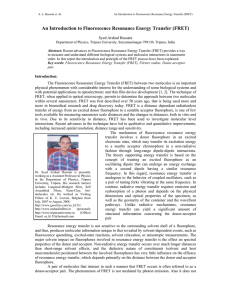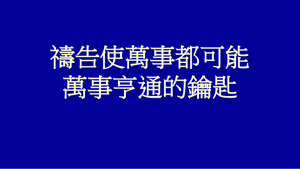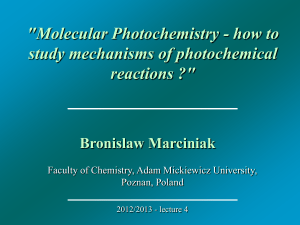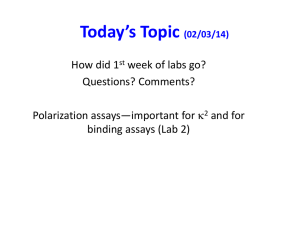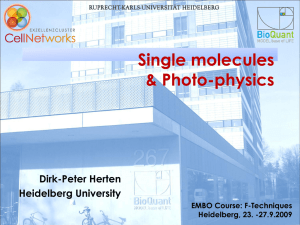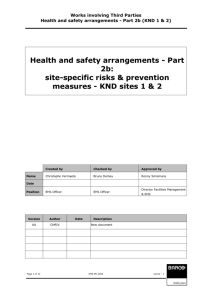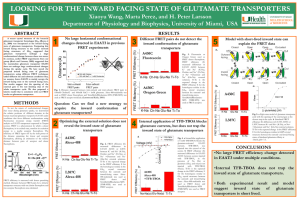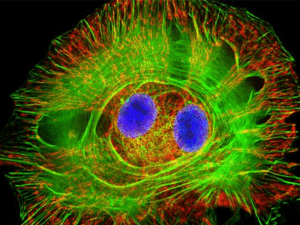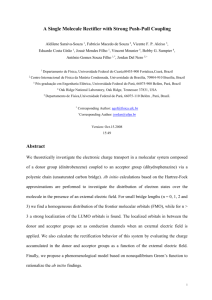Lecture 4: How to Measure FRET
advertisement
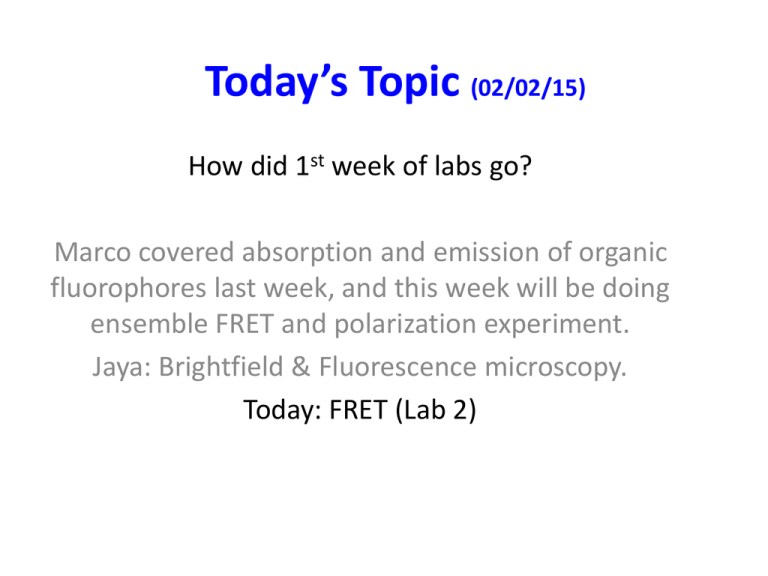
Today’s Topic (02/02/15) How did 1st week of labs go? Marco covered absorption and emission of organic fluorophores last week, and this week will be doing ensemble FRET and polarization experiment. Jaya: Brightfield & Fluorescence microscopy. Today: FRET (Lab 2) Example of FRET Fluorescein Rhodamine Fluorescein: Donor Rhodamine Acceptor How do you measure how far apart donor is from acceptor? Fluorescence Resonance Energy Transfer (FRET) Spectroscopic Ruler for measuring nm-scale distances, binding 1.0 E 0.8 Energy Transfer Donor Acceptor E 0.6 1 1 ( R / R0 ) 6 0.4 Ro 50 Å 0.2 0.0 0 25 50 75 100 R (Å) D A Time Dipole-dipole Distant-dependent Energy transfer Look at relative amounts of green & red R0 D D A A Time How to measure by donor quenching Energy Transfer = 1 – IDA/ID Energy Transfer = 1 – tDA/tD Latter is concentration independent, which is important if you’re measuring in a sample where it’s not easy to determine concentration, e.g. inside of a cell. Why does lifetime of donor get shorter in the presence of an acceptor? Fluorophores & Quantum Yield q.y. = # photons out/photons in. Have ≥ 1 electron that is free to move. Excitation light moves e’s around, i.e. a dipole, and it can reradiate, often with polarization. Good dyes: QY ≈ 1; Absorption ≈ 100,000 cm-1M-1 ( A = ebc) Energy Thermal relaxation [Picosec] Absorption [Femtosec] Fluorescence (krad ) & Non-radiative (kn.r.) Thermal relaxation [Picosec] k = krad + kn.r. t = 1/k = trad + tn.r. QY = krad/(krad + kn.r) FRET : competition between donor deactivating by internal processes and by acceptor being nearby E 1 1 ( R / R0 ) Energy Transfer = function (kET, knd) Energy Transfer Acceptor Donor E.T. = kET/(kET + knd) E.T. = 1/(1 + knd/kET) How is kET dependent on R? Kn.d. kET (Surprisingly,) it depends on R-6. E.T. = 1/(1 + knd/kET) = 1/(1 + knd/aR-6) = 1/(1 + R6 knd/a) E.T. = 1/(1 + (R6/Ro6)) = 1/(1 + (R/Ro)6) where Ro6 = E.T.-independent constants 6
